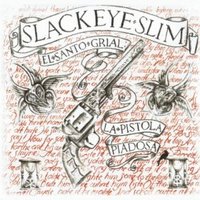To be involved in the music industry is amazing at times and other days, frustrating to no end, but this is what we enjoy the most, the challenge. If you are reading this blog we are assuming that you have noticed the variety of topics covered and the amount of information available. This we believe, is and always, how life should be. Its sort of like dinner in a big family, a plethora of stories all colliding at once but are inherently related.
We enjoy doing posts by well known writers and pundits for what is current within music as this is a wide open forum. Bob Lefsetz is an amazing writer who looks at both sides of the coin and weighs his opinions in a very distinct measure. For this we have become a steady reader of his blog and daily posts. Some days he really posts information that any and all should hear, especially for those of you that are in bands, enjoy music or are curious about why some drive Ferrari's and some vans have six sweaty dudes eating Ramen noodles at truck stops. The article below is an excellent write up on Major Labels and the old model that many bands felt as if they were "making it" when signing to a bad banking loan. Dive in, read on and crank the tunes...
 |
| Focus on the article nimrod - Photo By Gary Kramer Guitars |
The major label business model is theft
I have no idea why so many artists revere the major labels. It's like staying with an abusive spouse, fearful of the great big world outside the house, afraid you won't find something better. It's like a poor person voting for a Republican. It's against your interests. But since big media controls the debate, look at the Big Brother SOPA legislation it's ramming through the legislature as a result of paying off Congressmen, ignorant artists believe the labels are on their side.
They were never on your side.
From Ahmet screwing bluesmen back in the fifties to Warner Brothers insisting on 360 deals today, the goal of the label is to take your money. Oh sure, their hit to shit ratio sucks, but is that really a given? How come every Pixar movie has been a blockbuster? You can't call it luck at this point, there were just better people involved, insisting on excellence.
So you signed with the label, which paid you an advance, and the rest of the money, the touring and merch, was your own.
Now they're coming after that money too. They say it's necessary, that they can't make it without them. What's it gonna take for artists to say NO MAS!
As for the acts saying how much they used to make selling records, the dirty little secret was that after having a load of success, their lawyers renegotiated and got huge advances, which still weren't enough if you continued to sell. And if your deal didn't pay out, the labels took it out on the wannabes. Hell, costs are not even the same amongst the rich and poor acts. It takes longer to recoup if you're a newbie than it does if you're an established act, why should that be? Costs are costs!
And you don't end up owning what you pay for anyway. It's kind of like leasing a car. You pay for years and end up with nothing. The automobile manufacturers love this. Because you lease more car than you can afford, and since you're focusing on payment rather than total cost, you're not even aware you're being screwed. As for always wanting to drive a new car, I guess you're keeping the fashion industry alive too.
The record companies screwed the artists, paid off the radio stations and put the profits into their pockets. And now that there's less money to be made, someone's gotta pay, something's gotta give, and it sure as hell ain't the execs' salaries. Do you see Doug Morris making less? Jimmy Iovine? Are you kidding me? They just laid off the underlings. As for those underlings still with jobs, they're clueless as to the workings of the royalty department. Which is a black hole anyway. There's no such thing as an accurate accounting, people on both ends of a contract can't even agree on a definition, there's just a settlement after an audit. The labels never want to cave, never want to admit they're wrong, it sets a bad precedent.
As for their statement that no act ever broke through the Internet, that they're a necessary part of the equation, that's no longer true. Acts have broken via the Net, radio means less than ever, this is their worst nightmare, that they may not be needed, which is why they're on this giant disinformation campaign.
And they're not to be trusted. Acts couldn't share in the upside of CDs because of the startup costs. That would be like asking you to pay $10,000 for the new MacBook Pros to be released in the new year, the ones akin to MacBook Airs. Hell, there's tooling involved! Someone's gotta pay! But costs keep going down with volume, with success, and the labels never did raise CD royalty rates, they just kept that money. To the point where you now sell a track on iTunes and the act gets less than a dime.
Is that fair?
Of course not!
Which is why the major labels are gonna die. It's a fairness issue. Acts don't mind sharing fifteen or twenty percent of their revenue with managers, they can see the benefit in all avenues of exploitation, they believe the manager is on their side. But the labels ask for revenue in areas in which they've got no expertise, it's a land grab.
You're just looking for a sugar daddy if you sign with a major. You're afraid to do it by yourself. You're no Curt Flood, not one changing the game, but a soldier. But artists are supposed to think, they're supposed to follow their own muse, why can't they do this?
And now the enemy is Spotify.
Well, Spotify coughs up a minimum of 70% of revenues to rights holders. If your label is taking most of that, you just have a bad deal. If you're lamenting that per stream payment is less than an iTunes royalty you're a believer in buggy whips and typewriters. You can't succeed in the future by denying it.
We live in an era of data. Hell, Google makes analytics available for free!
But you don't see the labels publishing their accounting. There'd be too big an uproar. It's like the NBA owners saying they're losing money but refusing to open their books. One can argue the players had nowhere else to go, but that's not true with musical artists. Yes, major labels have a lock on Top Forty radio, but that's a smaller game than ever before.
And it's not only labels, artists pay lip service to all kinds of archaic forms that are destined for the scrapheap. Like terrestrial radio and the album. Yes, the artists can continue to be screwed by the system because they're just that uninformed, just that dumb.
You know who hates change?
ARTISTS!
They don't want to save themselves. They just want to blame someone else for their failure, for their lack of revenue.
Hell, I have sympathy for those with archaic deals formulated before the Internet era, but if you're starting now, you've got the freedom to succeed. You can do it your way. But you don't want to. You'd rather be in an abusive relationship, told how to behave and complain about it later.
Then again, you can tell people the truth all day long and they don't want to hear it.
Just like the artists think their savior is the major label, the public thinks Ticketmaster is the reason ticket fees are so high.
Meanwhile, fat cat businessmen are laughing all the way to the bank. They obfuscate the truth and you buy it.
Pioneers are gonna continue to blow the music landscape wide open. Napster begat the MP3 and Spotify, et al, are monetizing the ability of all people to have all the music for a very low price. Next comes the obliteration of the major labels. You can either be part of the problem or part of the solution.





































